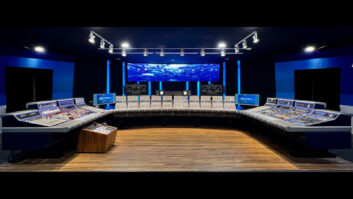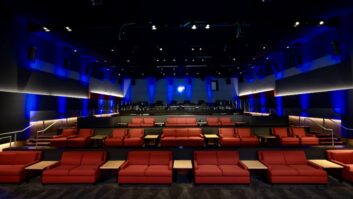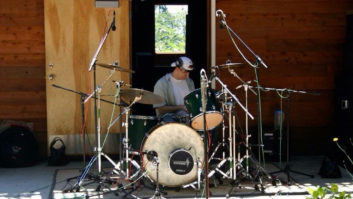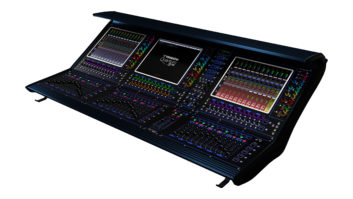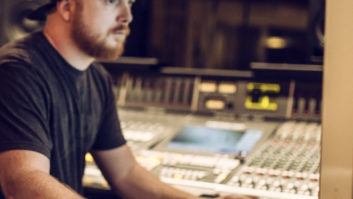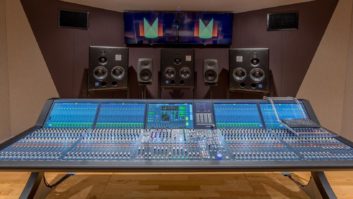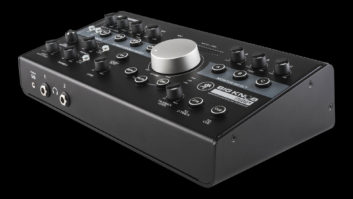For me, the goal of studio connectivity is to decrease the distance between intention and outcome. Traditionally, this meant using the shortest possible cable between guitar pedals or from mic to mic pre. Lately, it’s about enabling collaboration over long distances or facilitating the flow from my brain to the monitor(s).
My ideal workspace is a keyboard, trackball, some faders, and a display on a simple desk in front of amazing speakers in an acoustically correct room. The SSL Duality room at Odds On Studios in Las Vegas (upcoming feature in PAR‘s November issue) is a 96-fader example, a reminder of how a physical interface can connect me more immediately to a mix.
Wherever I am, e-mail, Facebook and iChat are integral to my business. Quick data transfer is a common priority for independent professionals — thus large, fast hard drives, wireless internet, and data dongles. An effective information backbone and an inspiring environment help produce creativity enhancing workflows.
Here’s how three pros do it in their modern domains:
Mark Jan Wlodarkiewicz, a.k.a. “Vordo,” film music editor:
“Connection is about the relationship between things,” offers Wlodarkiewicz. “As a film music editor, I have relationships with a picture department, composer, and dub stage, all of with whom I share data. We often use the ‘sneaker net,’ transferring to a drive and sending it over, because it is faster. We use FTP and Digidelivery, YouSendIt, and Relay, but not for final materials, which are often in GB chunks.
“The picture department sends AAFs [Advanced Authoring Format — the evolution of the OMF — Ed.], Quick Time files, Motion JPEG A or DV picture. If we’re using FTP, the size will be half HD (950 x 540) to save bandwidth. A 10 mips or better connection is necessary. Sharing stereo demos with my composer is usually done via DigiDelivery. Hard drives are necessary once we have a recorded score, since each cue is made up of many 5.1 stems of 48 kHz/24-bit audio averaging 1.15 gigs of data each. Someday, we’ll all have multi-gigabit wireless connections and then perhaps, we’ll never leave our editing stations. I’m not sure this is a good thing.”
Wlodarkiewicz’s work can be heard in Walk The Line, The Mothman Prophecies, William Shakespeare’s Romeo + Juliet, and many other Hollywood features, as well as independent film and music productions.
Greg Reierson, mastering engineer:
“Quick and sonically transparent switching and routing are vital to the workflow of my mastering studio,” says Reierson. “My studio looks like a few racks of gear and a pair of big speakers, but under the hood, it’s a maze of analog, digital, and IT signals.
“Without moving from my listening position, I can insert analog processors with my Masterƒorte custom mastering console, digital devices through my z-Systems Digital Detangler, and switch between computers via a Belkin KVM switcher. For analog gear used less often, I have a TRS patch bay.
“USB and FireWire hubs in the studio access client drives and computers in a machine room. Files move via an Ethernet switch.”
Reierson’s studio is Rare Form Mastering in Minneapolis, MN. He has mastered 4,000 albums for such artists as Prince and The Cure, as well as for hard-working musicians that make local music scenes thrive.
Bob DeMaa, mixing and mastering engineer:
“If mixing in Logic, I’ll route the stereo mix out of Apogee Rosetta 800 and rerecord it through Crane Song Trakkers,” explains DeMaa. “If I’m stereo mixing with Pro Tools|HD, 16 Digidesign 192 outputs feed the Roll Music Folcrom for analog summing; the Great River MP2NV provides makeup gain and color; and the Trakkers compress into the Rosetta with Peak Limiter engaged for digital re-recording into Logic. One of the advantages of using another I/O for re-recording is that I can record all the masters at 96k.”
DeMaa is an independent engineer in Los Angeles, CA who also provides expert audio technical services, freelance and via Obedia. He’s the guy you call when your rig isn’t working right.
Alex Oana is an award-winning producer/engineer in Los Angeles. digitaltoanablog.blogspot.com
